Langley Flying School Flight Training Information System
Pilotlog is a complete flight training operations management system developed by Langley Flying School in partnership with Mission Software. Pilotlog is used by Langley Flying School as the primary engine for managing the dispatch of training flights, for maintaining student pilot training records, and day-to-day implementation of training standards quality control. Overall, Pilotlog provides for the timely and efficient exchange of operational, training, and performance information between students and Langley Flying School's teaching and administrative staff. The screen images below provide but a small sample of the visual display that connect Pilotlog to its users.
The programming expertise behind Pilotlog is Paul Knapp, a graduate of Langley Flying School, and the CEO of Mission Software. The successful design of the program came from Paul firsthand experience during his student pilot days, and his ability to understand the operational and training needs of Flight Instructors.
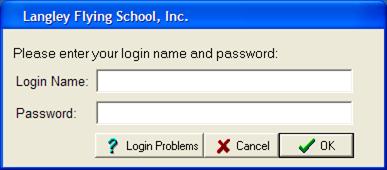
The screen image below shows the program features as viewed by a supervising flight instructor, provide access to all operational features. Students only access the Flight Operations feature, which is used for the dispatch and authorization of training flights, the Aircraftfeature, which is used for the technical dispatch of aircraft, and Pilots, which hourses the student's personal training records.

The screen image below displays what is completed by student prior to a training flight. The fuel quantity and oil qantity is completed by the student, and the authorization feature that incorporates electronic signing by crew is displayed on the right.
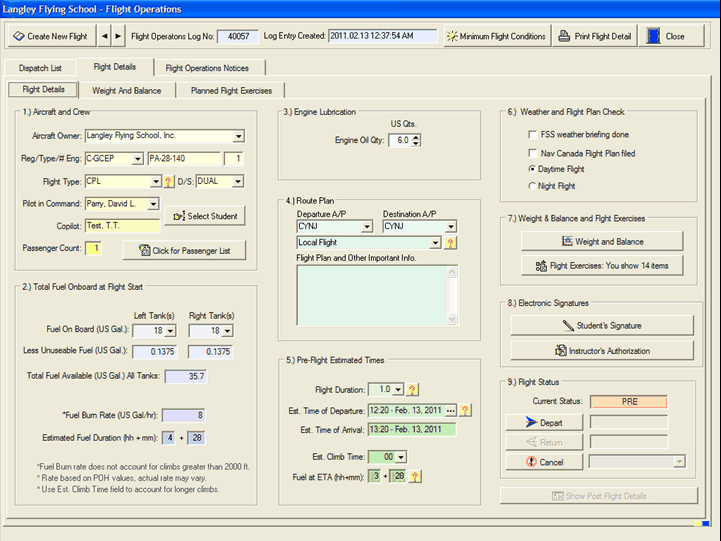
The screen below is part of the technical dispatch data inputs by students and displays the critical weight and balance data for the aircraft, including its centre of balance point (centre of gravity) as well as in takeoff and landing weight. The zero-fuel centre of gravity point is also displayed.
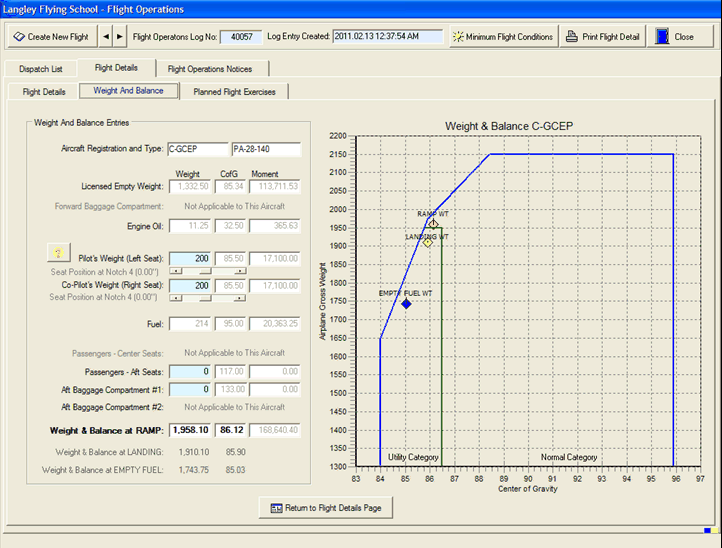
The screen image below provides students and staff with a summary of airworthiness or technical dispatch status of an aircraft prior to is use for a training flight. This main screen summarises the in-phase maintenance cycle and operational status for the aircraft, while the tabs along the top provide access to similar screens that pertain to out-of-phase maintenance tasks and the deferred defect status of aircraft equipment and systems.
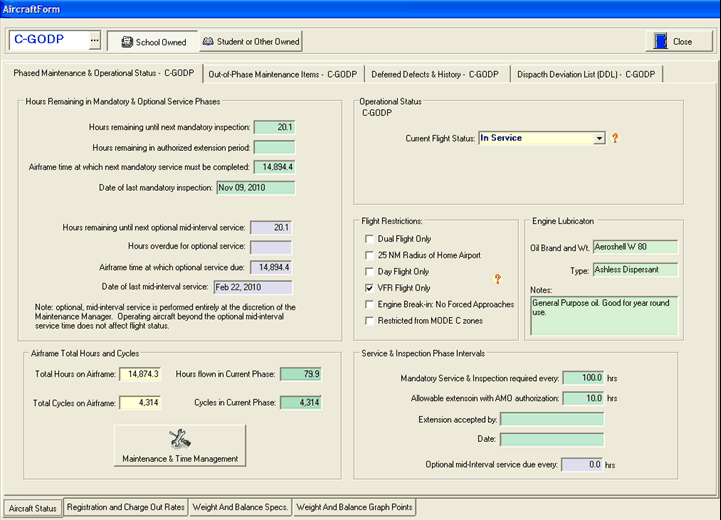
The screen below shows the intended flight exercises for the flight, in this case, dual instruction with a flight instructor. "PGI" indicates when Preparatory Ground Instruction has been provided (necessary for all new exercises), and "Solo" would be indicated if the student pilot was practicing on their own.
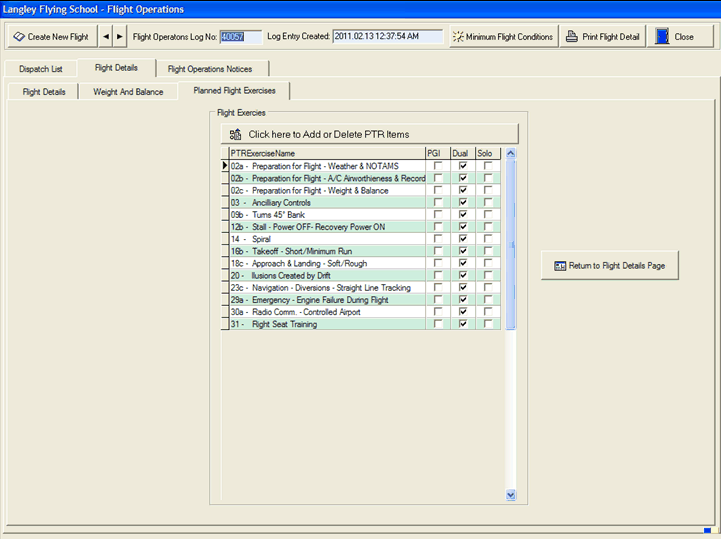
The subsequent screen below shows the total array of exercises that can be selected.
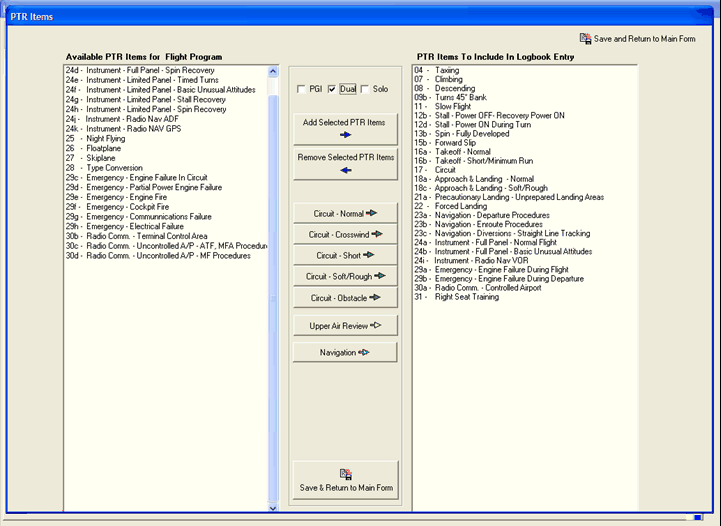
A critical feature of Pilotlog with respect to operation safety is the read-and-sign feature referred to as Flight Operations Notices. When changes in operational procedures are made, or when safety related information must be disseminated to all students, the Flight Operations Notices feature ensures that all student have read and signed published notices prior to conducting their next training flight. The screen image below is the access screen to current FONs, and the student is prevented from signing out a aircraft for a training flight unless there is an electronic signature on record for all current notices.
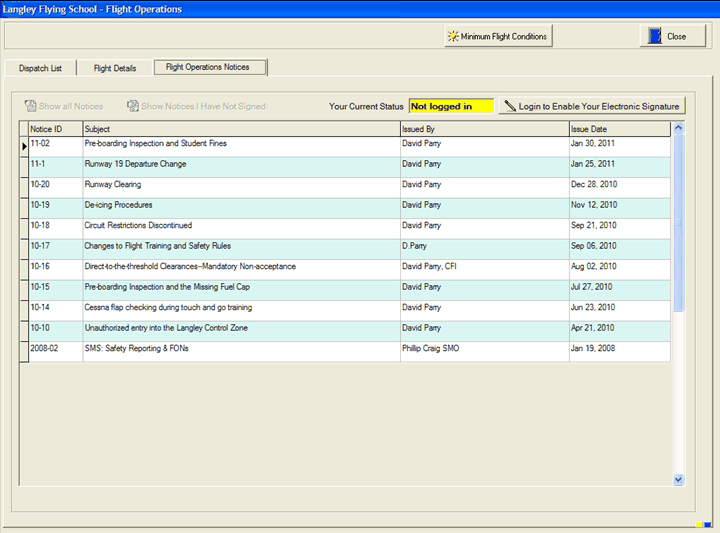
The largest and most complex feature of Pilotlog revolves around student training records and the associated Flight Instructor Checksheets though which the training curriculum is organized and delivered. The key components of the training records are accessed through the tabs that appear at the bottom of the first screen below, while subsequent screen images show features of the Instructor Checksheets which include electronic Instructors initialling completed learning outcomes and Instructor certification of student competency.
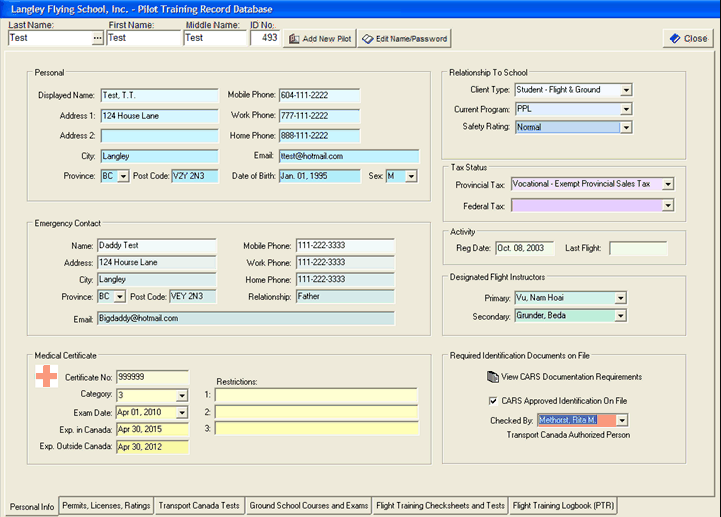
The screen below shows the central instructor check-sheet tracking summary, which essentially summarizes the curriculum students pass through on their way to becoming a Private Pilot. The progress of students follows the basis phases of training, including Intial Training (basic, intermediate, and advance maneuvers), Pre-solo Circuit Training (takeoffs and landings), Pre-solo Practice Area Training (preparing the student for solo flights from the airport to the practice area just north east of Langley Airport) Post-solo Practice Area Training (which consists of navigation training, instrument training, and flight test preparation training).

The screen below is a snapshot of Instructor Checksheet portion extracted from the Initial Training segment. It records the date specific checksheet items were briefed with the student.
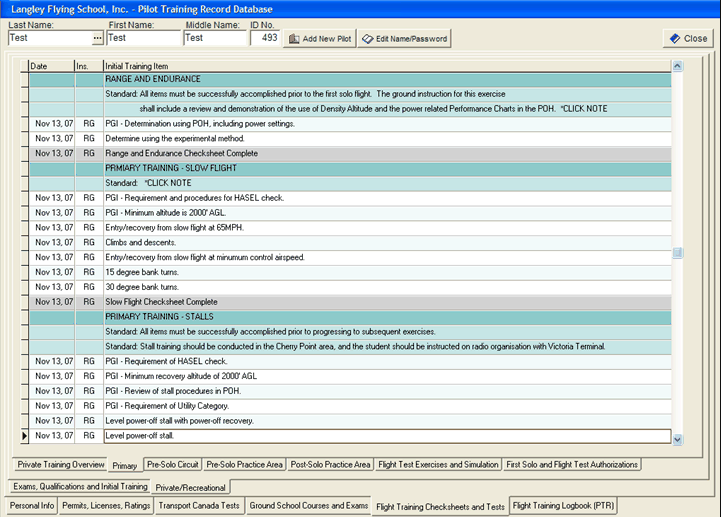
The Instructor Checksheet includes imbedded standards for Instructor reference:

.jpg)

